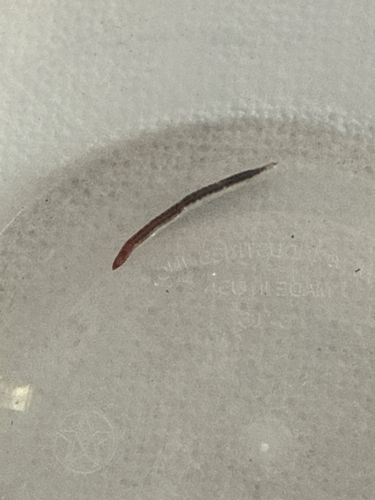Bloodworm
Scientific Name: Chironomidae larvae (various genera and species)
Order & Family: Order: Diptera, Family: Chironomidae (non-biting midges)
Size: Typically 0.5 to 2.5 cm (0.2 to 1 inch) in length.

Natural Habitat
Found in various aquatic environments including freshwater, brackish water, and marine sediments, often in muddy or silty bottoms of ponds, lakes, rivers, and coastal areas. They can thrive in oxygen-depleted conditions.
Diet & Feeding
Primarily detritus, algae, and microscopic organisms found in their aquatic environment.
Behavior Patterns
Larvae develop in water, feeding on detritus and microorganisms. They respire through their skin or specialized gills. Some species can tolerate low oxygen conditions. They are a significant food source for many aquatic predators.
Risks & Benefits
Benefits: They play a crucial role in aquatic ecosystems as decomposers and a vital food source for fish, amphibians, and other aquatic invertebrates. Risks: Some individuals may develop allergic reactions if exposed to large quantities of bloodworms, especially when handling them in dried form for fish food. They are generally harmless to humans in their natural environment.
Identified on: 8/31/2025